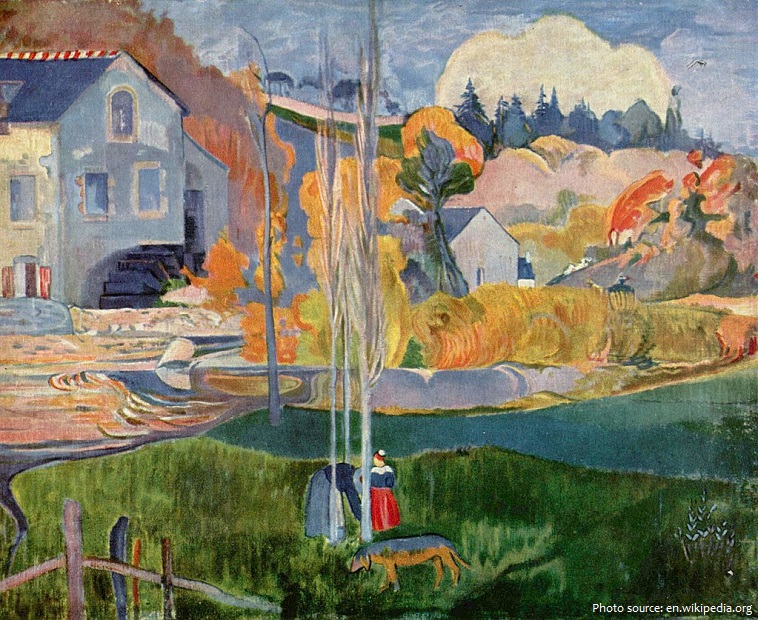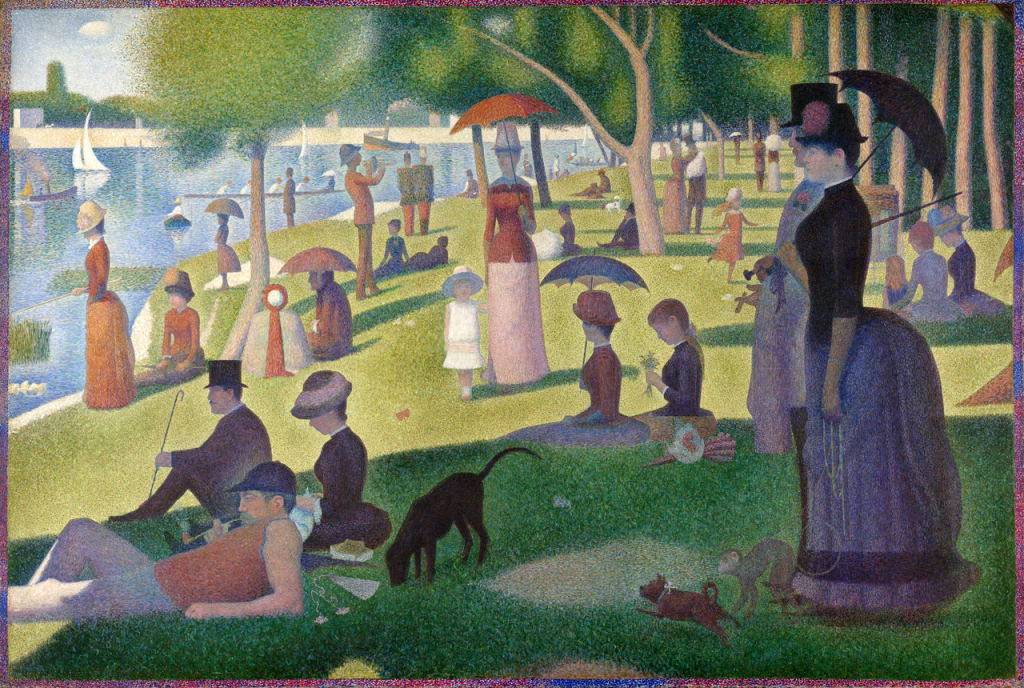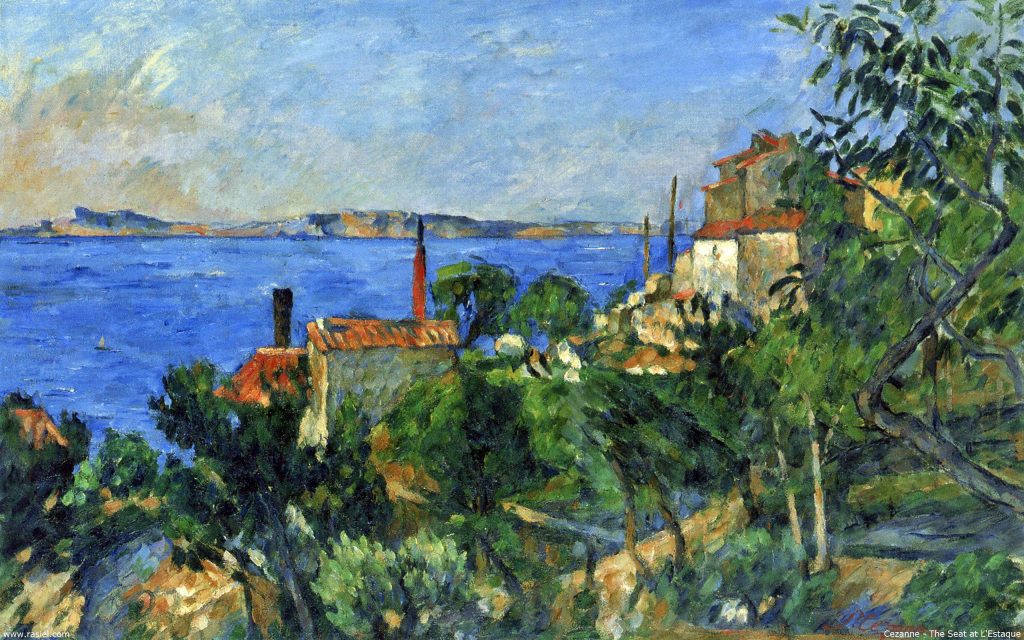
Post-Impressionism was a predominantly French art movement that developed roughly between 1886 and 1905, from the last Impressionist exhibition to the birth of Fauvism.
Post-Impressionism emerged as a reaction against Impressionists’ concern for the naturalistic depiction of light and colour. Its broad emphasis on abstract qualities or symbolic content means Post-Impressionism encompasses Les Nabis, Neo-Impressionism, Symbolism, Cloisonnism, the Pont-Aven School, and Synthetism, along with some later Impressionists’ work.
Breaking free of the naturalism of Impressionism in the late 1880s, a group of young painters sought independent artistic styles for expressing emotions rather than simply optical impressions, concentrating on themes of deeper symbolism. Through the use of simplified colors and definitive forms, their art was characterized by a renewed aesthetic sense as well as abstract tendencies.

Post-Impressionists extended the use of vivid colors, thick application of paint, distinctive brush strokes, and real-life subject matter, and were more inclined to emphasize geometric forms, distort forms for expressive effect, and to use unnatural or arbitrary colors in their compositions.
Among the nascent generation of artists responding to Impressionism, Paul Gauguin (1848–1903), Georges Seurat (1859–1891), Vincent van Gogh (1853–1890), and the eldest of the group, Paul Cézanne (1839–1906), followed diverse stylistic paths in search of authentic intellectual and artistic achievements.
Despite the various individualized styles, most Post-Impressionists focused on abstract form and pattern in the application of paint to the surface of the canvas. Their early leanings toward abstraction paved the way for the radical modernist exploration of abstraction that took place in the early-20th century.

Critics grouped the various styles within Post-Impressionism into two general, opposing stylistic trends – on one side was the structured, or geometric style that was the precursor to Cubism, while on the other side was the expressive, or non-geometric art that led to Abstract Expressionism.
The Post-Impressionists often exhibited together, but, unlike the Impressionists, who began as a close-knit, convivial group, they painted mainly alone. Cézanne painted in isolation at Aix-en-Provence in southern France; his solitude was matched by that of Paul Gauguin, who in 1891 took up residence in Tahiti, and of van Gogh, who painted in the countryside at Arles. Both Gauguin and van Gogh rejected the indifferent objectivity of Impressionism in favour of a more personal, spiritual expression.
The term “Post-Impressionism” was first used by art critic Roger Fry in 1906. Critic Frank Rutter in a review of the Salon d’Automne published in Art News, 15 October 1910, described Othon Friesz as a “post-impressionist leader” – there was also an advert for the show The Post-Impressionists of France. Three weeks later, Roger Fry used the term again when he organised the 1910 exhibition Manet and the Post-Impressionists, defining it as the development of French art since Manet.

Paul Cézanne was a French artist and Post- Impressionism painter whose work began the transition from the 19th century conception of artistic endeavor to a new and radically different world of art. Cézanne’s often repetitive brushstrokes (“passages”)are highly characteristic and clearly recognizable. He used planes of color and small brushstrokes to form complex fields and convey intense study of his subjects.
Vincent van Gogh was a Dutch Post-Impressionist painter who posthumously became one of the most famous and influential figures in Western art history. In a decade, he created about 2,100 artworks, including around 860 oil paintings, most of which date from the last two years of his life. They include landscapes, still lifes, portraits, and self-portraits, and are characterised by bold colours and dramatic, impulsive and expressive brushwork that contributed to the foundations of modern art. He was not commercially successful and, struggling with severe depression and poverty, committed suicide at the age of 37.

Eugène Henri Paul Gauguin was a French Post-Impressionist artist. Unappreciated until after his death, Gauguin is now recognized for his experimental use of color and Synthetist style that were distinct from Impressionism. Toward the end of his life, he spent ten years in French Polynesia. The paintings from this time depict people or landscapes from that region.
Georges Pierre Seurat was a French post-Impressionist artist. He devised the painting techniques known as chromoluminarism and pointillism and used conté crayon for drawings on paper with a rough surface.
Through their radically independent styles and dedication to pursuing unique means of artistic expression, the Post-Impressionists dramatically influenced generations of artists, including the Nabis, especially Pierre Bonnard and Édouard Vuillard, the German Expressionists, the Fauves, Pablo Picasso, Georges Braque (1882–1963), and American modernists such as Marsden Hartley and John Marin